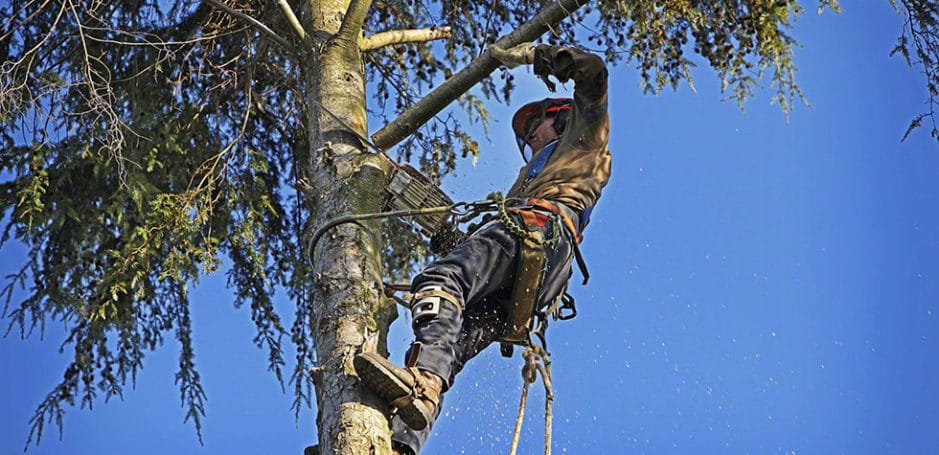As the frequency and intensity of severe weather events continue to rise, the importance of proactive storm preparedness cannot be overstated. One crucial aspect of storm preparedness is tree trimming with the help of tree services, which plays a vital role in minimizing risks and damage caused by high winds, heavy rain, and other adverse weather conditions.
In this article, we will explore the significance of tree trimming in storm preparedness and discuss the techniques and best practices for minimizing risks and promoting safety in your landscape.
Understanding the Risks
Trees can pose significant risks during severe weather events if they are not properly maintained. Weak or overgrown branches are susceptible to breaking off and causing damage to property, vehicles, and structures. Additionally, trees with dense canopies are more likely to catch the wind and topple over, especially if the soil is saturated from heavy rainfall. Falling trees and branches can also pose safety hazards to pedestrians and occupants of nearby buildings, making proactive tree trimming from tree removal companies Chevy Chase essential for protecting life and property during storms.
Identifying Hazardous Trees and Branches
The first step in storm preparedness is to identify hazardous trees and branches that may pose risks during severe weather events. Look for signs of decay, disease, or damage, such as dead or dying branches, cracks in the trunk, or fungal growth. Trees with dense canopies, multiple trunks, or poor branch attachments are also more prone to failure during storms. It is essential to assess the structural integrity of trees and prioritize the trimming of high-risk areas to reduce the likelihood of damage and injury during severe weather.
Principles of Tree Trimming for Storm Preparedness
Proper tree trimming techniques are essential for promoting safety and minimizing risks during storms. When trimming trees for storm preparedness, the following principles should be followed:
- Crown Thinning: Remove dead, diseased, or crossing branches to improve air circulation and reduce wind resistance within the canopy. Thinning the crown can also help reduce the weight of the tree and minimize the risk of branch failure during storms.
- Crown Raising: Raise the lower branches of trees to increase clearance over structures, vehicles, and pedestrians. This helps prevent branches from striking objects or causing obstruction during storms and allows for better access to buildings and walkways.
- Crown Reduction: Reduce the overall size of the tree canopy by selectively pruning back long or overextended branches. Crown reduction helps lower the center of gravity of the tree and reduces the risk of toppling over during high winds.
- Structural Pruning: Prune branches with weak attachments or narrow crotch angles to promote stronger branch unions and prevent splitting or breakage during storms. Structural pruning helps improve the overall stability and integrity of the tree canopy, reducing the likelihood of storm damage.
- Professional Assessment: For large or mature trees, consider hiring a certified arborist or tree care professional to assess the health and structural integrity of the tree and recommend appropriate tree trimming techniques. Arborists have the expertise and experience to identify potential hazards and implement tailored pruning strategies to enhance storm resilience and minimize risks.
Timing of Tree Trimming
The timing of tree trimming for storm preparedness depends on the specific needs of the tree species and the severity of the weather conditions in your area. In general, it is advisable to schedule tree trimming during the dormant season, typically in late fall or winter, when trees are less actively growing and pruning wounds can heal more quickly. However, if immediate hazards are identified, such as dead or hanging branches, emergency pruning may be necessary to address imminent risks and prevent damage during upcoming storms.
Assessing Surrounding Hazards
In addition to evaluating the condition of trees on your property, it is essential to assess surrounding hazards that may impact tree safety during storms. Consider factors such as proximity to power lines, neighboring trees, buildings, and roadways, as well as prevailing wind patterns and soil conditions. Identify potential sources of damage, such as leaning trees, overhanging branches, or weak structures, that may exacerbate risks during severe weather events. By addressing these hazards in conjunction with tree trimming efforts, you can create a more resilient and hazard-resistant landscape.
Emergency Preparedness Plan
Developing an emergency preparedness plan for tree-related hazards is crucial for ensuring prompt and effective response during storms. Establish clear protocols for monitoring weather forecasts, assessing tree risks, and implementing emergency pruning or removal as needed. Identify designated personnel or contractors responsible for tree maintenance and emergency response, and ensure they are trained and equipped to handle storm-related hazards safely and efficiently. Communicate the emergency preparedness plan to all stakeholders, including residents, tenants, and emergency services, to promote awareness and cooperation in mitigating storm risks.
Post-Storm Assessment and Recovery
After a severe weather event, conduct a thorough assessment of tree damage and prioritize cleanup and recovery efforts to minimize further risks and restore safety in the landscape. Evaluate trees for structural damage, uprooting, or leaning, and address immediate hazards such as fallen branches or damaged limbs. Utilize appropriate equipment and safety gear to safely remove debris and clear pathways, and enlist the assistance of qualified professionals for tasks requiring specialized skills or equipment. Monitor trees for signs of stress or disease following the storm and implement remedial measures as necessary to promote recovery and resilience in the landscape.
Community Engagement and Collaboration
Engage with local communities, neighborhood associations, and government agencies to foster collaboration and collective action in addressing tree-related hazards and promoting storm preparedness. Organize community-wide tree trimming initiatives, workshops, or educational events to raise awareness about the importance of proactive tree care and encourage participation in storm preparedness efforts. Collaborate with local arborists, forestry experts, and emergency responders to develop coordinated response plans and share resources and expertise for mitigating tree-related risks during storms. By working together, communities can enhance their resilience to severe weather events and build safer, more sustainable environments for all residents.
Long-Term Planning and Sustainability
Integrate tree trimming and storm preparedness into long-term planning and sustainability initiatives to promote resilient and healthy urban landscapes. Incorporate tree care practices into municipal ordinances, zoning regulations, and urban forestry programs to prioritize tree maintenance and hazard mitigation in public spaces and residential areas. Implement green infrastructure strategies such as tree planting, urban forestry, and green stormwater management to enhance climate resilience, reduce flood risks, and mitigate the impacts of extreme weather events. By investing in the health and safety of trees, communities can create more livable, sustainable, and resilient environments for future generations.
Conclusion
Tree trimming plays a critical role in storm preparedness by minimizing risks and damage caused by severe weather events. By identifying hazardous trees and branches, implementing proper trimming techniques, and scheduling pruning at the appropriate times, property owners can enhance the resilience of their landscapes and protect life and property during storms. Whether DIY trimming or hiring a professional tree cutting services Kensington, investing in proactive tree care is essential for promoting safety and preserving the beauty and integrity of your outdoor environment.



